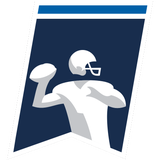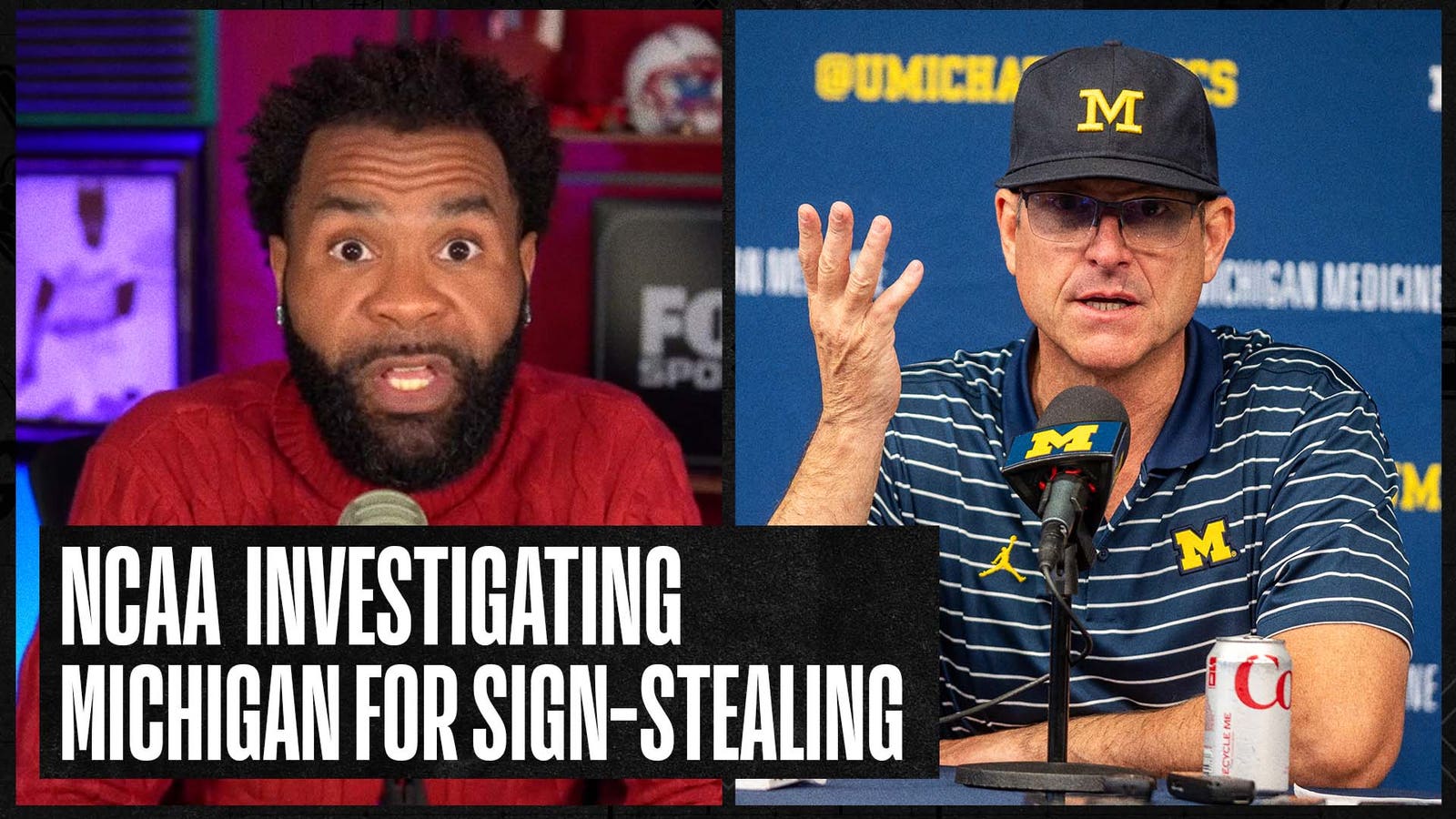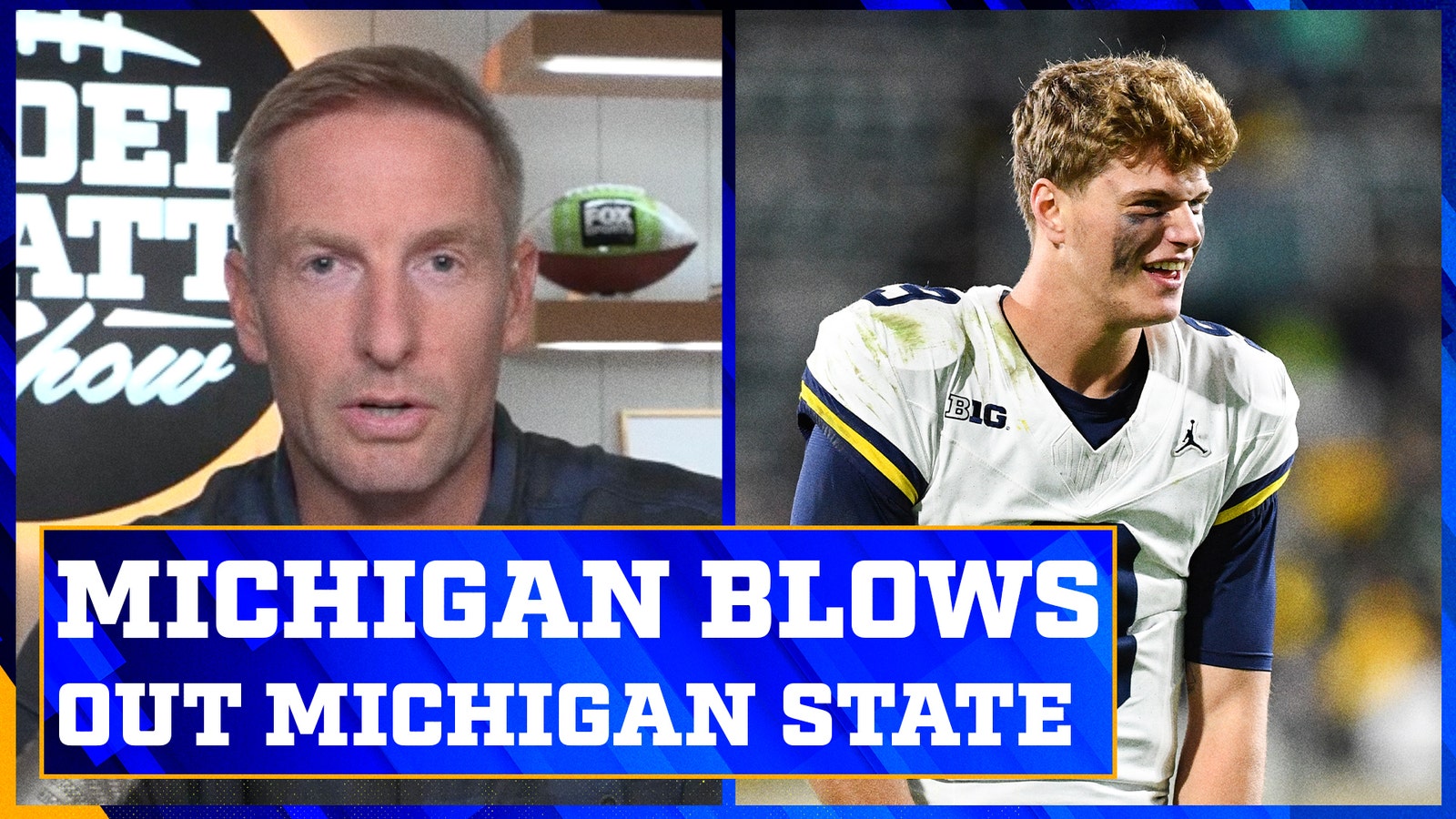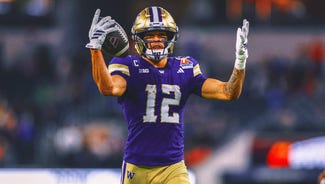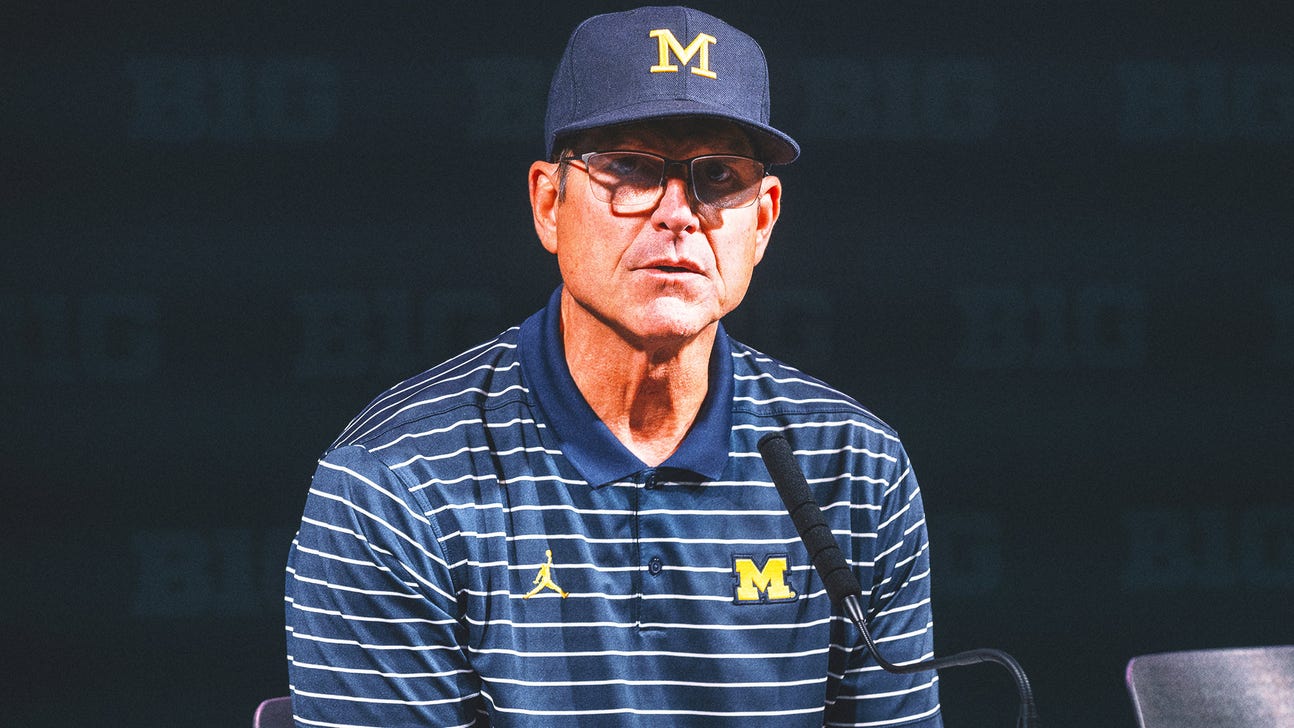
NCAA's investigation of Michigan stems from rules made to curb financial advantages
There was a time in college football when it was not uncommon to see a coach at a game involving a future opponent, taking notes and gathering intel.
"When I worked for Jimmy Johnson at Oklahoma State, when they had a game Saturday, I was at the next (opponent). I was scouting the next game," recalled Houston Nutt, the former Arkansas and Ole Miss coach who worked under Johnson with the Cowboys in the early 1980s.
The NCAA banned in-person advanced scouting in 1994 in part because not every school could afford to do it. Now Michigan is being investigated by the NCAA for a sign-stealing scheme that allegedly involved people secretly being sent to record opponent's games.
Michigan suspended a low-level football staffer who is the focus of the NCAA's investigation. The Big Ten has informed all of Michigan's upcoming opponents. Unfazed, the Wolverines continued to romp through their schedule Saturday night, beating rival Michigan State 49-0.
Michigan under investigation for sign-stealing: RJ Young weighs in
NCAA rules do not directly ban the stealing of signs. There are rules against using electronic equipment to record an opponent's signals, but what's mostly at issue with Michigan is NCAA Bylaw 11.6.1: "Off-campus, in-person scouting of future opponents (in the same season) is prohibited."
Wolverines coach Jim Harbaugh, who served a three-game, school-imposed suspension earlier this season for a separate, still-active NCAA infractions case tied to recruiting, denied any knowledge or involvement of impermissible advanced scouting.
"There's a target, yeah. Everybody has pointed that out from the beginning of the season, but our guys are very focused," Harbaugh said after Saturday night's game.
As with many NCAA rules, the association is trying to govern away advantages that one school might have over another based on budget sizes. Programs such as Michigan, Ohio State, Texas and Alabama have annual athletic budgets that surpass $200 million, almost double some of those even in their own Power 5 conferences.
Go outside the Power 5 and even the biggest-spending major college football schools have budgets closer to $50 million than $100 million.
David Ridpath, a professor at Ohio University and former compliance director at Colorado State and Marshall, said he remembers former Tennessee coach Phillip Fulmer, back when he was an assistant, attending a CSU game in Fort Collins to scout the Rams in the late 1980s during an off week for the Volunteers.
A few years later, responding to complaints from coaches and administrators, the NCAA decided to put a stop to it.
"And it really was a financial thing because you had all these coaches that were going out, and honestly the coaches even didn't want to do it anymore. Plus, technology was changing at that time, too," Ridpath said.
Is Michigan proving they are consistently the best team in the country?
Every game is recorded for self-scouting purposes by the home team, but a long time has passed since actual film was exchanged between opposing teams. Access to digital recordings of games is readily available through online exchange programs.
The way the game is played now has put more of an emphasis on signs, and in turn sign-stealing.
For most of Nutt's career, which started as a graduate assistant at Oklahoma State in 1981, teams would mostly methodically huddle in between snaps, with plays sent in via player substitution.
As offenses began to abandon the huddle for an up-tempo approach in the 2000s, signaling both offensive and defensive plays from the sideline became more of a necessity. And with that, teams started trying to decipher each others' signs.
Many teams use hand signals and will have multiple signalers on the sideline to try to confuse opponents. Some teams use elaborate play cards — Beyonce, Kermit the Frog, Scott Van Pelt and scores of other images have been used over the years.
Frequently spotted on sidelines these days is a large sheet, tarp or poster board used to shield signs from ending up on scouting film.
Still, somebody in a stadium could conceivably be monitoring or recording signals that can then be matched up to scouting film for decoding.
In the NFL, where advanced scouting is allowed, the New England Patriots were caught recording opponent signals during a game in 2007 and were sanctioned with fines and the loss of a draft pick.
Hand signals largely have gone away in the NFL over the last decade, replaced by radio technology in helmets that allow coaches to verbally communicate with some players on the field.
Player-to-coach communication has been a persistent topic in college football, where the rules have to cover hundreds of schools with vastly different resources. Much like with in-person scouting, concerns about creating a competitive advantage based upon resources and a lack of consistency in implementation have been a stumbling block.
Still, this year during bowl season, the NCAA will allow teams to use coach-to-player communication technology during postseason games if both sides agree.
Steve Shaw, the national coordinator of football officials and secretary rules editor for the NCAA, said that instead of trying to standardize the technology and force every team to use the same setup, teams will be permitted to use whatever they want.
Shaw said he hopes it's a step toward coach-player technology becoming the norm in college football.
"If we can get to a world with no signals," Shaw said, "that's just one less thing to worry about."
Reporting by The Associated Press.
